Starducks!
Stopped at a convenient casino the other night with one of the ducks.Grabbed a 'pick me upper' before I started playing.
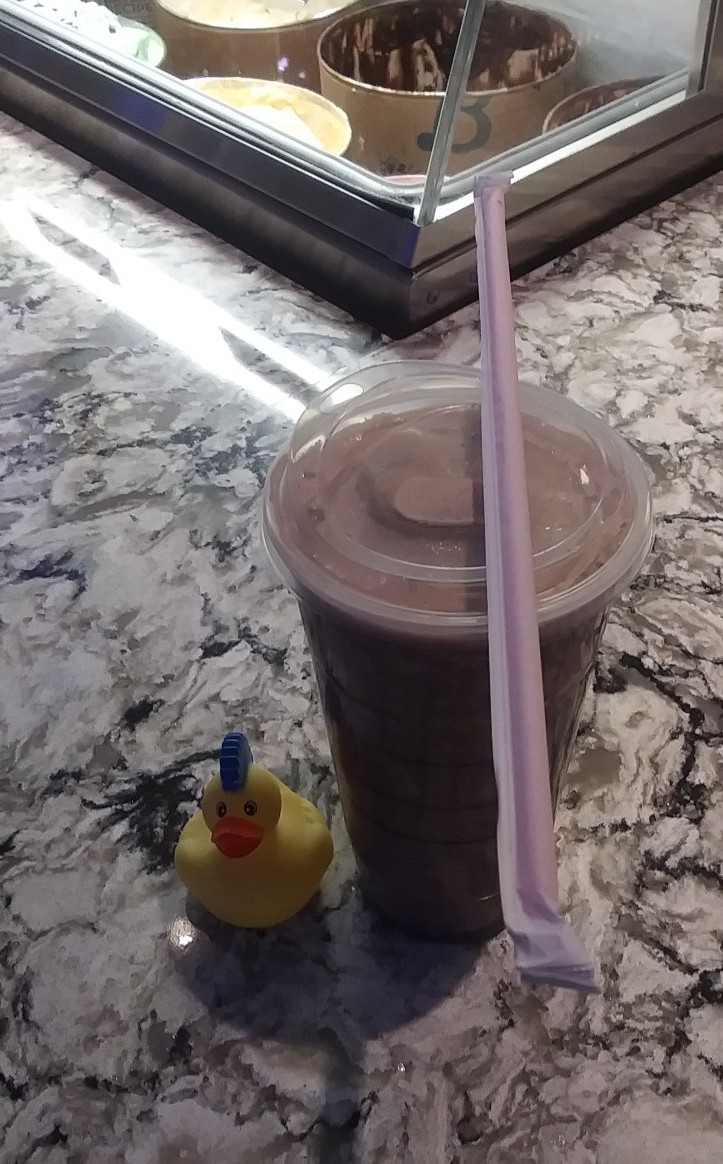
Played a slot machine. Up a little, down a little. Ended up with nothing to cash out - $0 balance on the credit meter after my last spin, no wager saver!
Checked out the baccarat table for kicks. Absolutely nothing interesting going on, just a standard mini-bacc table in an alcove off to the side. The space looked too empty, like there used to be more in there, but they recently changed things around. No buy-in, no play; didn't want to disturb the player who was clearly very deep in concentration.
They were in the process of installing what appeared to be two banks of SG Fusion systems on the main floor. Mostly appeared that two or three managers were standing around observing, while the tech was off looking for a baggie of hardware that got misplaced.
Fun trip, but I don't think that property is my kind of place.
Unappealing playfield
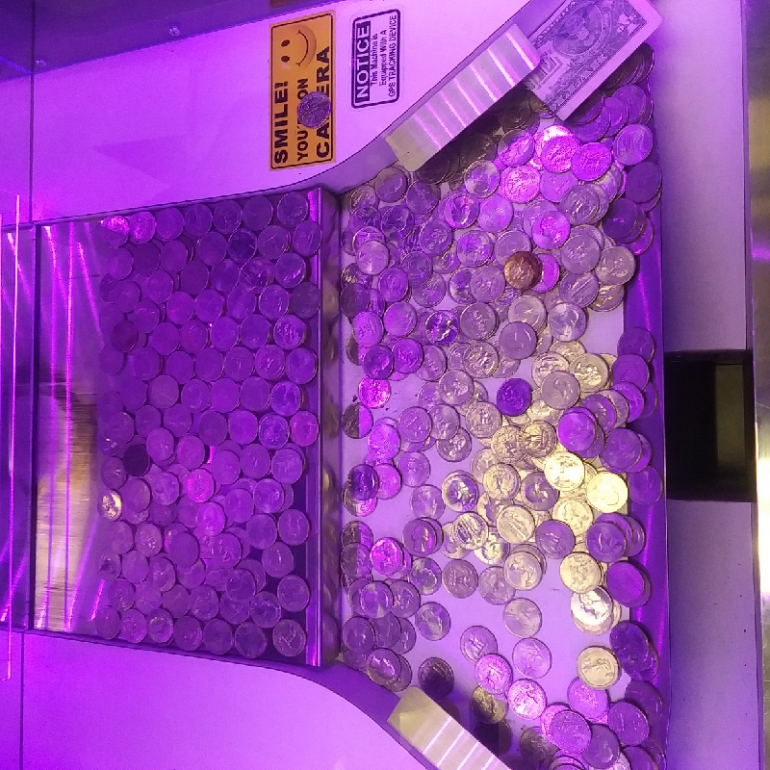
Too many gaps on the lower playfield to bother playing.
No idea how it happened; maybe the person who services the route scooped a bit.
The upper playfield has a lot of double stacked coins, so I think they recently adjusted the mechanism - that sort of thing used to be less prevalent.
Comments
Went back 2 days later with the kids. The gaps were filled in, but nothing was ready to drop.
Net loss of $6 for the team, we heard about 3 coins go down the left house chute.
Fuel Bowser
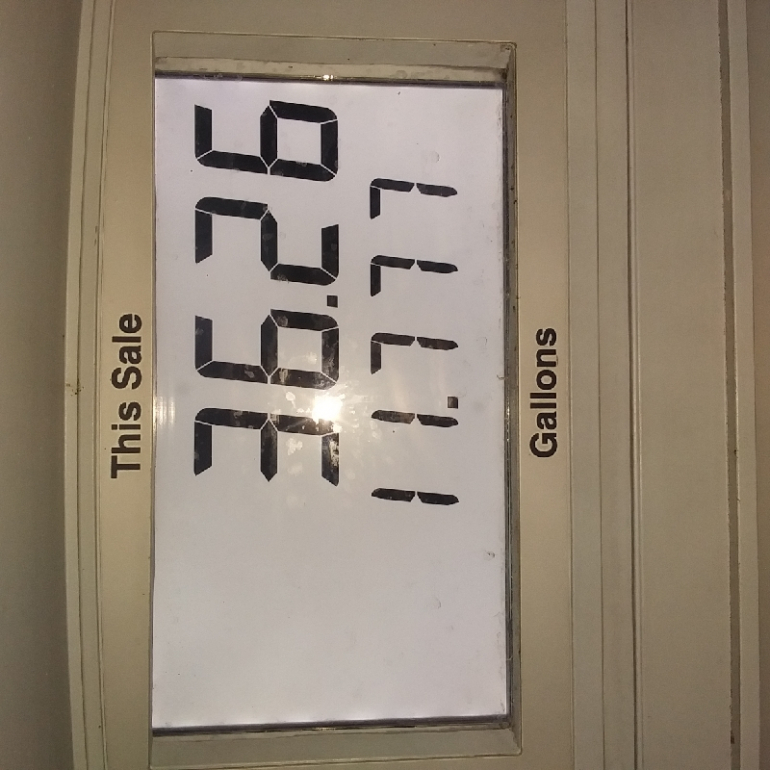
Perhaps it's telling me to roll the dice?
(I didn't work for it, so no particular dispenser-influencing play... just fueled up like normal.)
1 percent RTP
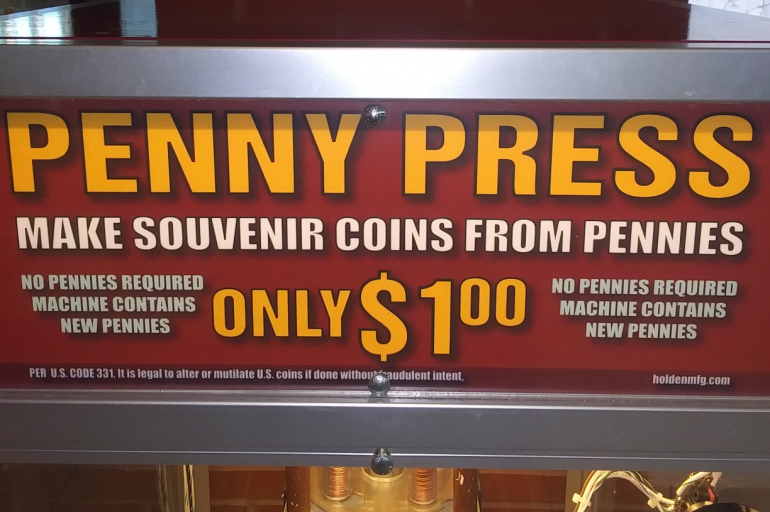
I must admit, I've played a few times.
Comments
I've seen these but resisted the impulse
Most of the entertainment comes from watching the reels spin.
It's probably a better play if it's a limited edition souvenir, like at the World's Fair.
I consider squished coins to be slightly more convenient than tiny decorative spoons, and just as useful.
North and South
While this may have little value in standard play, I believe that people who play card games should know some trivia about playing cards.Many playing card designs are asymmetrical.
I believe the patterns are generally discernable on cards of Standard, Enhanced Imaging, and Jumbo index sizes (in USPCC parlance). Super Jumbo and LoVision card face designs remove the pip area, if memory serves.
North:
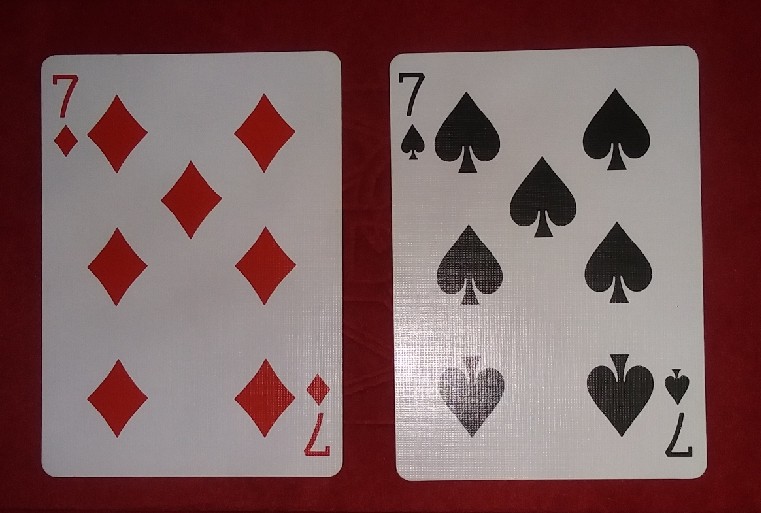
South:
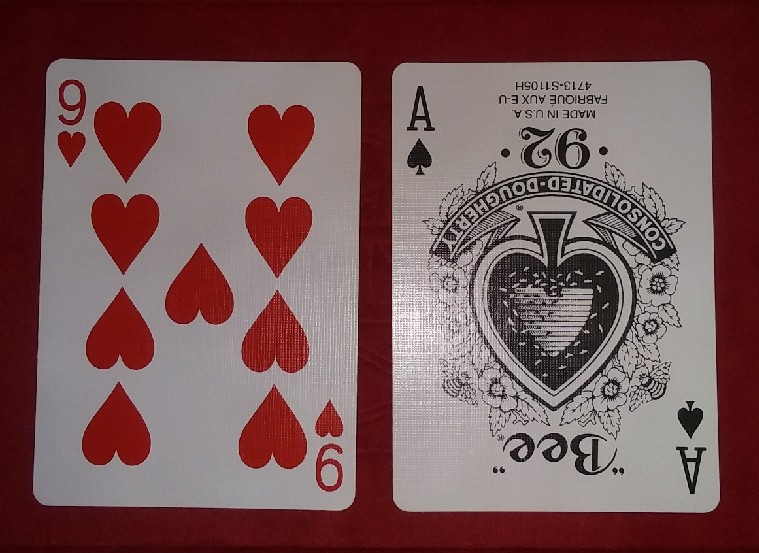
Images are of USPCC Bee 92, Standard index.
Comments
If you look closely at that 7 of spades it is printed (or strictly speaking cut) with a slight but discernible sideways offset. The gap between the number 7 and the edge is MUCH smaller on the top number 7.
If the backs are printed as badly, that might be used in edge sorting???
Quote: Oncedear
If the backs are printed as badly, that might be used in edge sorting???
Many cards are asymmetrical.



Comments
Is that duck sporting a blue mohican haircut?
Yep! A real cutie. Beautiful plumage.